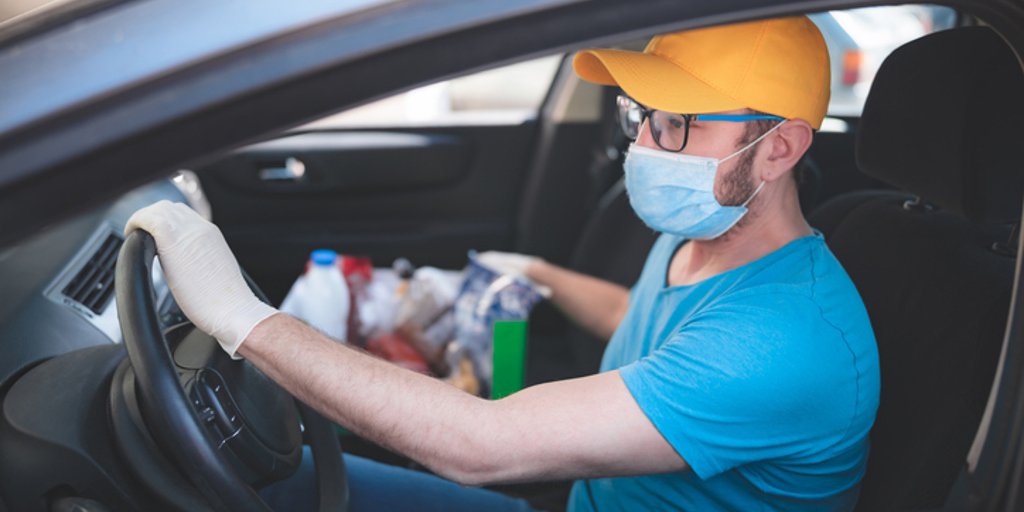Volunteers Who Drive: Are Your Nonprofit Clients Unknowingly Putting Their Organizations at Risk?
Many organizations depend on volunteers to get behind the wheel to help them maintain programs, as well as provide vital transportation services in their community. However, for many organizations, the issue of how to insure volunteers who drive can be confusing.
The fact is, volunteers are not employees. So, when they are asked to drive on behalf of the organization, there are typically two options: driving a vehicle owned by the organization or using their own. In part one of this blog post, we’ll look at key issues created by volunteer drivers that will help your nonprofit clients better understand their risk exposure.
Organization-owned vehicles
When it is the organization’s vehicle, it doesn’t matter whether the person behind the wheel is an employee or a volunteer, as the nonprofit’s commercial auto insurance policy will apply to accidents involving vehicles owned by the nonprofit. In this type of business auto policy, an insured driver is anyone using a covered auto with the insured’s permission. Because a volunteer is driving the nonprofit’s vehicle with permission, there is coverage in the event of a loss.
Agent tip: Review your nonprofit client’s auto policies to identify any potential gaps in coverage and exclusions that could put them at risk. To ensure the policy is current, require them to notify you when there are changes in drivers/vehicles, and to maintain an updated vehicle schedule and driver’s list.
Volunteer-owned vehicles
While using their own cars, volunteers have coverage through their own personal auto insurance policy. If a volunteer is involved in an accident, all named persons on the policy are covered up to the policy’s limits. However, while this protects the volunteer and to some degree the organization, there are catastrophic events where the damages could very well exceed the limits on the volunteer’s auto insurance policy. The fact that the volunteer was driving on behalf of the organization could make the nonprofit vulnerable to being named in a lawsuit as a result of an accident.
Take note! Have your nonprofit clients request proof of personal insurance from all volunteer drivers and when possible, suggest that they carry liability limits that are above the minimum legal requirement to best protect the driver and the organization.
Hired and non-owned liability coverage
Hired and non-owned auto liability insurance provides liability coverage for the organization if a volunteer, an employee or another insured is driving a vehicle that isn’t owned by the organization. It can be included in a commercial auto policy or added as an endorsement to a general liability policy.
Take note! Hired and non-owned auto liability insurance also can help safeguard a nonprofit if a volunteer driver’s personal auto insurance policy has lapsed or been canceled. It also provides automatic coverage for other non-owned vehicles such as those that are leased or rented by the organization.
Volunteer driver risk exposures
Identifying the risk exposure and having the right insurance are giant steps in the right direction. However, having volunteer drivers behind the wheel of their own or the organization’s vehicle simply raises the potential for loss. Some of these risk exposures include:
- Transporting clients. Organizations that typically provide transport services within their community — especially nonprofits that work with children, senior citizens and individuals with special needs — and recruit volunteers for the job have a potential liability risk.
- Driving in unfamiliar territory. Volunteers who drive for nonprofits are often tasked with transporting clients to areas they may not be familiar with, such as a medical facility in another city. Having to navigate new areas and checking GPS or directions on a smartphone while transporting clients pose dangers.
- Driving an unfamiliar vehicle. Getting behind the wheel of a vehicle that a person is not familiar with, such as a truck or a lift van, can be stressful. Volunteers who are asked to drive a vehicle they may not be comfortable with are at increased risk of driving-related accidents.
- Time constraints. Volunteers who are asked to drive for the nonprofit may be running last-minute errands for a special event or transporting clients to a medical appointment. Time constraints can put pressure on drivers and result in accidents.
In part two of this blog, we’ll look at steps nonprofits can take to best manage volunteers who drive on behalf of their organizations.
Charity First understands the unique, complex risks that come with the incredible work of organizations that utilize volunteers to provide transportation and other services for the elderly, children, and other vulnerable populations. To learn more, please contact us at 800-352-2761 or marketing@charityfirst.com.


